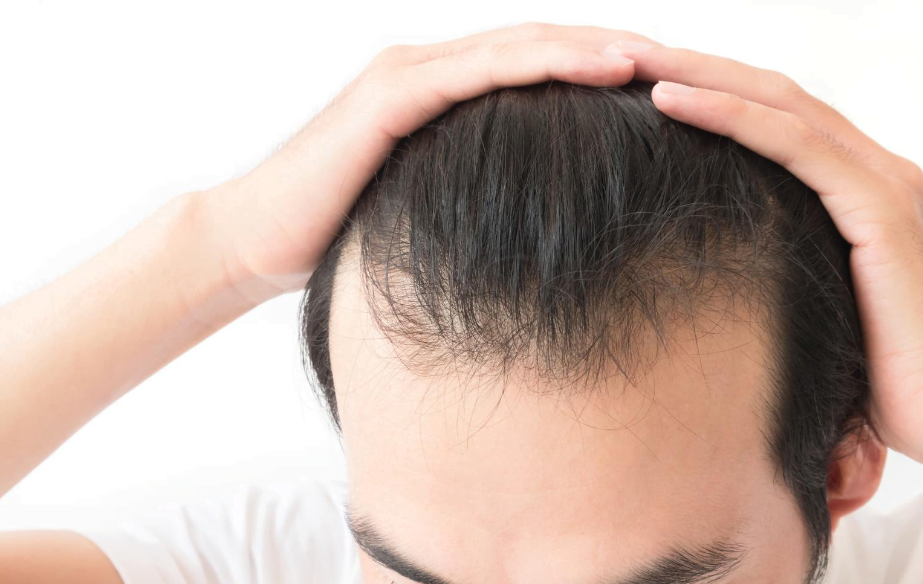What Percentage Of Hair Transplants Fail?
What Percentage Of Hair Transplant that Fail? The percentage of hair transplants that result in failure, the Fail hair transplant is virtually non-existent provided the patient is in good health, adheres to the pre- and post-operative guidelines outlined by the doctor, and that the most ideal procedure is selected. There must be sufficient donor hair available for transplant, and the number of grafts transplanted should be more than enough to achieve adequate coverage throughout the recipient site. A reputable and experienced hair transplant surgeon will take the time to evaluate each one of these factors to ensure that the hair transplant is destined to be a success for the patient.
 In terms of the individual grafts that are transplanted from the donor site to the recipient site, there are many techniques employed by hair transplant doctors to ensure that the maximal number of grafts are preserved and successfully transplanted. Whether an automated system is used or the hair transplant is performed manually, every transplant doctor is keenly aware of the importance of preserving as close to 100 percent of the graft as possible.
In terms of the individual grafts that are transplanted from the donor site to the recipient site, there are many techniques employed by hair transplant doctors to ensure that the maximal number of grafts are preserved and successfully transplanted. Whether an automated system is used or the hair transplant is performed manually, every transplant doctor is keenly aware of the importance of preserving as close to 100 percent of the graft as possible.
Many doctors employ the use of advanced tools and a variety of other systems designed to preserve every last follicular unit for transplantation, but it is nonetheless the case that a small percentage of the follicular units will not result in growth after transplantation to the recipient site. This percentage is typically far less than five percent, and hair transplant doctors work with diligence and precision to ensure that the greatest percentage of follicles is successfully transplanted and not going to fail and to form a natural-looking hair restoration.
Why Do Hair Transplants Fail?
A failed hair transplant is very uncommon, and some of the reasons why a hair transplant might fail are often identifiable by the doctor during the consultation process. The health of the donor hair and the availability of sufficient follicular units can be easily evaluated by a skilled surgeon in advance of any procedure, but there are also some additional factors that may play a role in a hair transplant failing to deliver the results a patient is seeking through such a procedure.
Aside from the observable pre-existing factors that may increase the likelihood of failure, the actual hair transplant session itself is the single most important factor for determining the success rate of any transplant procedure, regardless of whether it is FUT, FUE or any other available technique. This fact should clearly underscore the importance of working with a skilled and experienced doctor who understands how to ensure a patient’s hair transplant meets or exceeds expectations.
During the procedure, the removal and transplantation of each follicular unit causes a fair amount of stress that can lead to the failure of an individual unit. This is why it is ideal for a hair transplant doctor to work in conjunction with a team of medical professionals who are able to efficiently perform the procedure while ensuring the preservation of each follicular unit. The doctor also carefully selects each donor unit according to its strength and vigor, as this greatly enhances the likelihood that the hair transplant will be a success.
What Are the Side Effects From a Hair Transplant?
Following the completion of the hair transplant procedure, the doctor should reiterate the post-operative care instructions with the patient in order to reduce the likelihood of any side effects or complications arising. The specific instructions will vary depending upon whether the patient chooses to undergo FUE or FUT, as the latter will require the patient to take it easy for a few days following the procedure while the former typically allows patients to return to normal activity just a single day after the procedure’s completion.
In the days following the procedure, patients may experience swelling around the donor and recipient sites, and some patients report the formation of a crust-like substance around the implanted follicular units. Neither one of these issues should cause concern, as the appearance of these conditions should dissipate within a short period of time. It is also common for the transplanted hair follicles to fall out in the weeks after the hair transplant, which is to be expected and is simply a part of the process. Hair regrowth should begin in the recipient site shortly thereafter, with the final outcome of the transplant realized about six months following the initial procedure.
If Fail, Do People Need Repeat Hair Transplant Sessions ?
Whether or not a patient will require repeat hair transplant sessions has everything to do with the personal circumstances associated with their individual hair loss as well as their own personal hair restoration goals. It is, however, quite rare that a patient will require a repeat hair transplant session due to nothing more than the failure of a hair transplant. Instead, a repeat hair transplant is often part of the initial plan outlined together by the doctor and the patient.
It is most often the case that a repeat hair transplant session is necessary for a patient seeking to achieve a great deal of hair density within the recipient site or for a patient seeking extensive coverage for a fairly sizable area of the scalp suffering from thinning hair or hair loss. Regardless of the goal, the potential need for repeat transplant sessions should be clearly addressed in great detail during the initial consultation process.
Since a single session of FUT is capable of yielding as many as 5,000 to 9,000 individual follicular units while FUE is capable of as many as 7,500 individual follicular units, a patient preferring the FUE procedure over the FUT procedure may find it necessary to undergo multiple sessions to achieve hair transplant density equal to that of the FUT procedure. If the patient is seeking to achieve a significant density level and has sufficient donor hair to achieve this goal, then repeat FUT sessions may be utilized to generate this particular result.
Does a Hair Transplant Prevent Hair Loss?
 As it currently stands, there is simply no available procedure for hair loss prevention. It is possible to greatly reduce the incidence of hair loss and to even slow the rate of hair loss to a degree that closely approximates prevention, but a hair transplant itself cannot prevent future hair loss. This is why the age of the hair transplant candidate and the current extent of the candidate’s hair loss should be thoughtfully evaluated during the consultation process, as this is the best way to determine a course of action based on the patient’s individual circumstances.
As it currently stands, there is simply no available procedure for hair loss prevention. It is possible to greatly reduce the incidence of hair loss and to even slow the rate of hair loss to a degree that closely approximates prevention, but a hair transplant itself cannot prevent future hair loss. This is why the age of the hair transplant candidate and the current extent of the candidate’s hair loss should be thoughtfully evaluated during the consultation process, as this is the best way to determine a course of action based on the patient’s individual circumstances.
While a hair transplant may not succeed in preventing future hair loss, the benefits of a hair transplant are such that future hair loss can be accounted for and obscured by the doctor performing the hair transplant procedure. This is due to the fact that hair loss tends to follow one of several observable patterns, which allows the doctor to accurately predict future areas of loss that can be successfully obscured by the hair transplant procedure.
In addition to crafting a hairline and placing follicular units in order to best address both current and future hair loss, it is also quite likely for a hair transplant doctor to recommend prescription medicine that contributes to the improved health of the transplanted hair as well as the naturally growing hair that may be at risk of future loss. If a patient is experiencing rapid hair loss, however, it may simply be most ideal to delay the hair transplant procedure until the full extent of the hair loss is completely understood.
Can a Failed Hair Transplant Be Corrected?
Fortunately, a failed hair transplant can be corrected regardless of the rationale behind its failure. A patient who underwent a hair transplant procedure many years ago and is unhappy with the unnatural appearance of the end result certainly has a wealth of options at their disposal. Corrective hair transplants can be performed in much the same way that the current procedures are performed, with many doctors able to cover up the appearance of unnatural-looking grafts by performing a hair transplant with the goal of camouflaging the old and out-of-place grafts.
The doctor has other options available for a corrective hair transplant, as it is possible to remove the unnatural-looking grafts for the purpose of redistributing them so they appear far more natural within the recipient site. This is often the case with outdated “hair plug” procedures, which can be corrected through the removal and division of the follicular units to achieve a result that is much more in line with current practices and standards. In instances in which the failed hair transplant was not the result of an outdated technique, it is nonetheless possible for a skilled and experienced doctor to correct whatever issue may have caused the initial failure.
Furthermore, patients who wish to conceal their hair transplant scars can do so with a non-surgical technique called Scalp Micropigmentation which is gaining popularity.

